$DEFI Trending, Business Insider Featuring $DEFI, Q4 2025 and Q1 2026 Developments and MORE! – October Development Update
October was a month of strong growth and ...
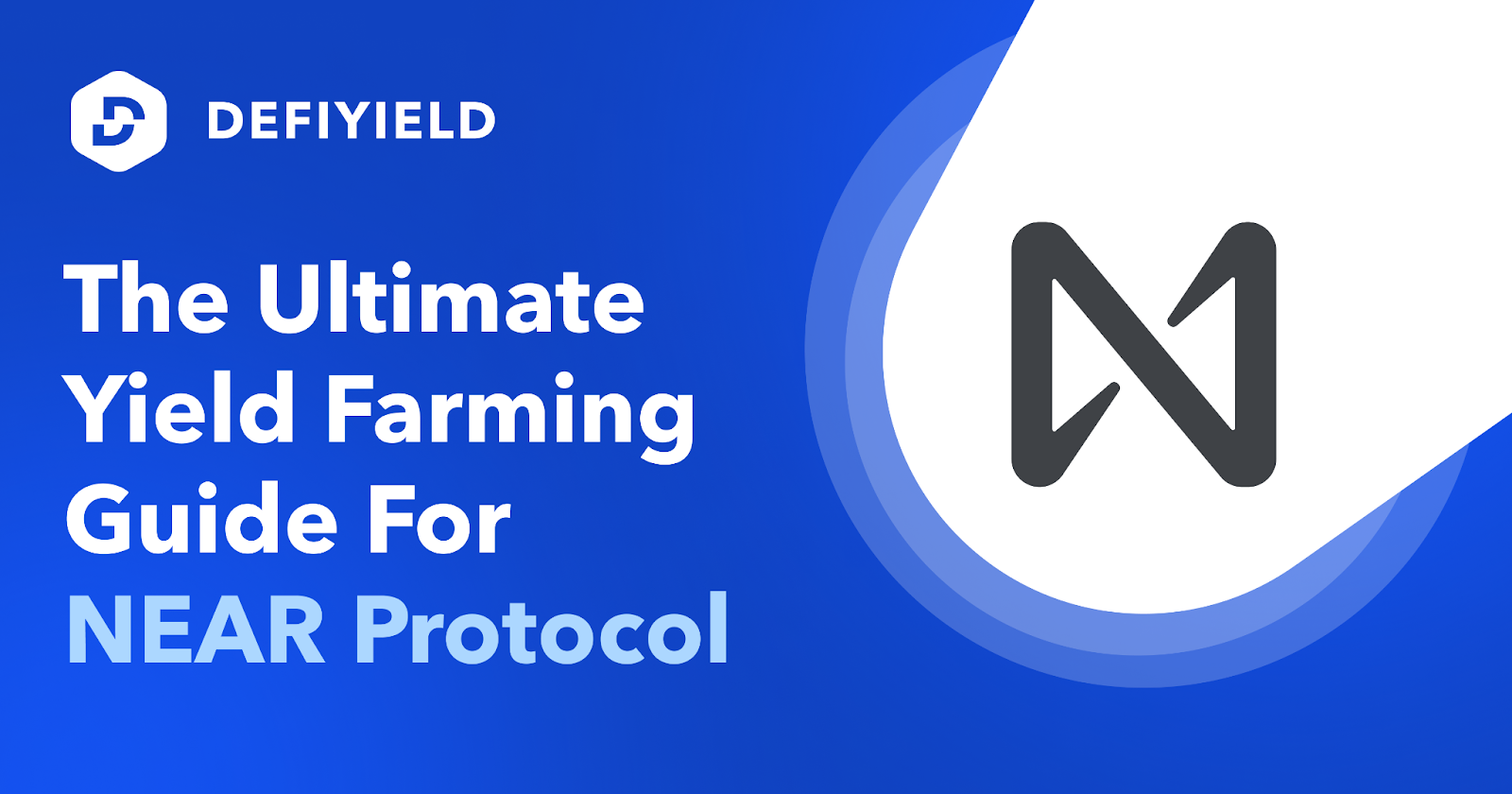
Scalability is probably the most talked about topic when it comes to layer-one protocols right now, with sharding often mentioned as a key innovation that will solve the problem.
But with Ethereum sharding still some way off, where can developers and users turn if they want to utilize this technology innovation sooner rather than later?
Step forward NEAR Protocol.
This Proof-of-Stake (PoS) blockchain claims to be simple, secure and scalable as a result of its sharded architecture. It also includes a decentralized development platform that has been designed to be easy to use for developers, a strategy it hopes will eventually result in mass adoption by users.
NEAR Protocol has big plans for the future but also staking and yield farming opportunities right now. In this guide, you’ll find out all you need to know about them, as well as the architecture, wallets, bridges and ecosystem that make up the NEAR Protocol.
NEAR describes itself as a collective, a foundation and a development platform built on a new layer-one blockchain. It claims to be simple, secure and scalable technology that can be used to reimagine business, creativity and community in order to build a more sustainable and inclusive future.
The NEAR blockchain uses a Proof-of Stake (PoS) consensus mechanism and sharded architecture to scale transaction throughput. NEAR has also been designed for usability, so developers can deploy applications easily and users can be onboarded quickly.
“NEAR is a next-generation smart contract platform. It is the closest thing to Ethereum 2.0’s vision of a sharded scalable blockchain, but launched years before Ethereum 2.0.” — Haseeb Qureshi, Dragonfly Capital
Initially, NEAR was created as an Artificial Intelligence and Machine Learning project by Co-Founders Illia Polosukhin and Alexander Skidanov in early 2017. However, this shifted in 2018 when they started to build the NEAR Protocol. The aim was to build a platform that was easy for developers to use and would make mass adoption possible.
The NEAR blockchain was created and developed by the NEAR Foundation. This is a Swiss-based nonprofit organization that uses its financial and operational resources to support the NEAR community and the goal of reaching ‘a world where people control their money, their data, and the tools to build new ideas’. Its mainnet went live in April 2020 and token transfers were made possible later that year, in October 2020.
“The NEAR team is a rare combination of engineers who are both theoretically deep and also extremely pragmatic.” — Avichal Garg, Electric Capital
NEAR claims to offer a foundation for creation, solutions for scaling and a vision of a multi-chain future. It also claims to be high-speed but climate neutral, as well as sustainable, cost-effective and secure.
“We are trying to build a world where people control their assets, their data and power of governance. This is what we call the Open Web World.” — Illia Polosukhin, NEAR Co-Founder
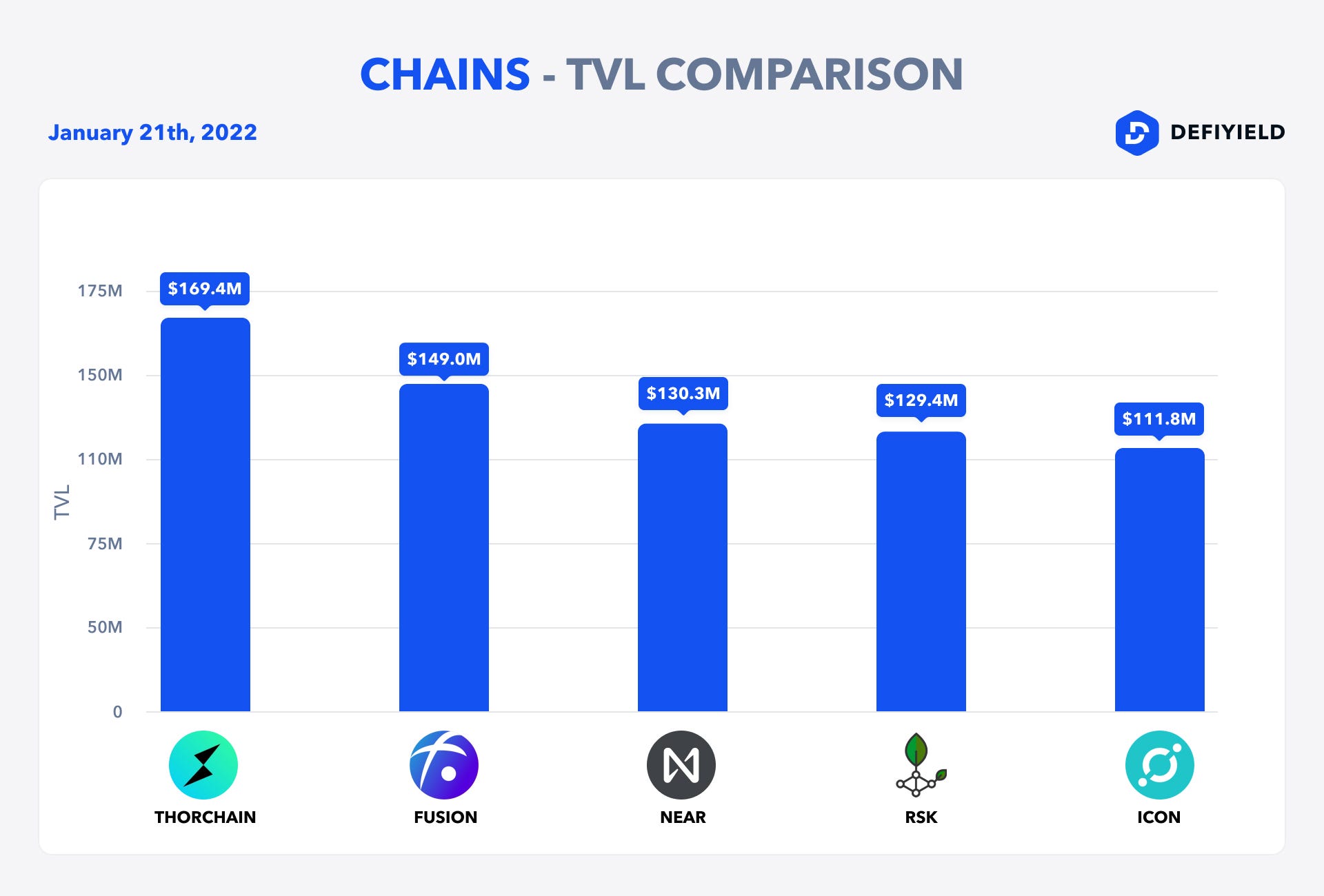
Sharding is a crucial part of NEAR’s design. The consensus mechanism splits the network into parallel shards and distributes the computation to increase the network’s processing capacity. Therefore each node only stores a small subset of the overall platform data.
This architecture is aimed at increasing transaction throughput in order to scale the network, minimise congestion and achieve high performance.
NEAR includes a number of key technology features, some of which are described below.
This involves adjusting the number of shards the NEAR Protocol supports based on network use, so the infrastructure can scale when required but remain cost-effective if not.
This allows NEAR Protocol to maintain a single chain of data while distributing the computing required to maintain it into chunks, which are processed by nodes and added to the main chain.
This is the process of new block production, which allows the network to achieve a certain level of finality through one round of communications before full confirmation in a second round.
One of NEAR’s main objectives is to be developer-friendly and it has introduced a number of tools to ensure that aim is achieved, including a JavascriptSDK, RustSDK, AssemblyScriptSDK and JSON RPC API, as well as a Command Line Interface and ‘nearup’ for deployments.
Developers may be incentivised to build decentralised applications by the fact that NEAR distributes 30% of fees to the contract a transaction calls.
Furthermore, NEAR has recently announced a $800 million grants fund. It includes $250 million in ecosystem grants, a regional fund of $100 million and $100 million for startups. A devoted $350 million fund from Proximity Labs is being directed towards DeFi.
The main NEAR bridge is the one to Ethereum but other bridges either have or are likely to be announced soon, as described below.
This is NEAR’s bridge to Ethereum. It allows users to easily transfer tokens back and forth between the two networks. Like most bridges, it does this by locking the tokens of one network in a native smart contract and creating equivalent tokens on the other. Rainbow Bridge was launched in March 2021.
Although not live yet, the Cardano stable coin hub announced in November 2021 that it would be building a bridge to NEAR as part of a new partnership.
Governance on NEAR is open to contributions from the community, so anyone can submit or comment on an improvement proposal. If a proposal receives enough support, NEAR development teams will build a spec and aim to merge the change.
NEAR is the native token of the NEAR Protocol. It is a utility token that powers the NEAR Protocol blockchain and all applications that use it.
As of 11 January 2021, NEAR has a maximum supply of 1,000,000,000, a price of $15.99 and a current market cap o f$9,682,271,971 (according to CoinGecko data).
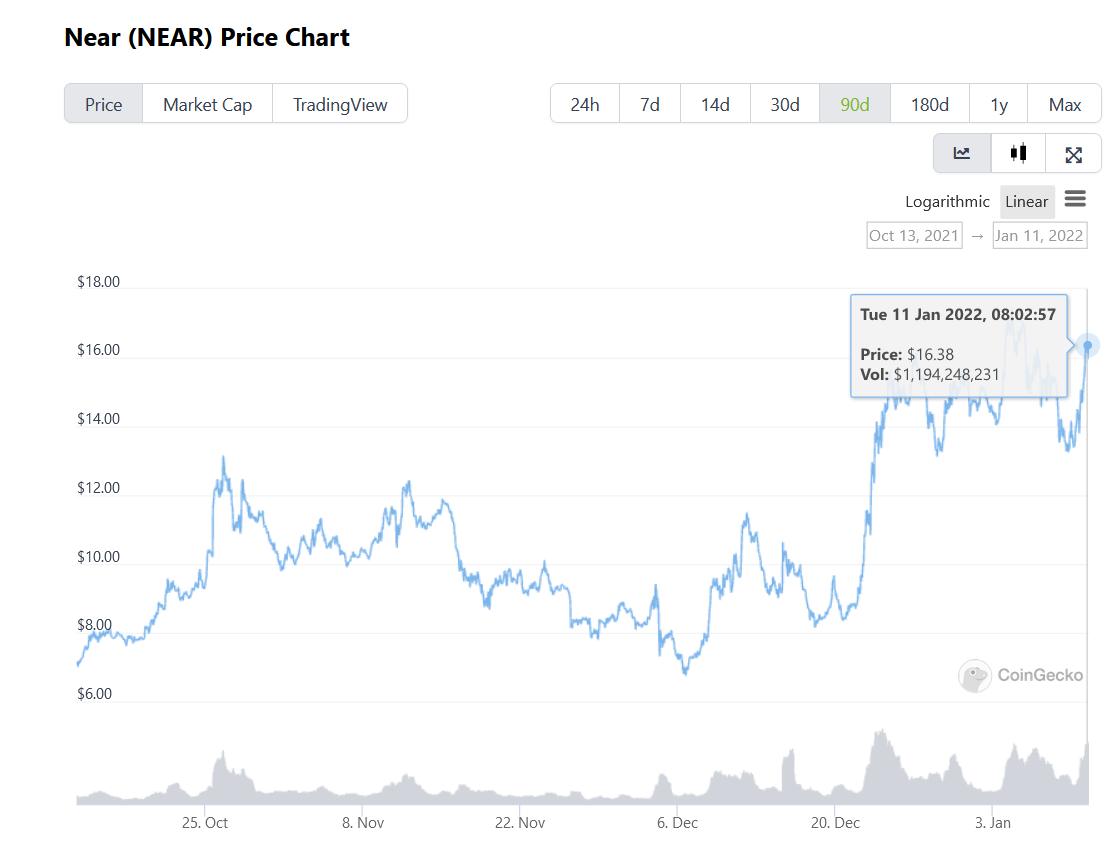
As mentioned, NEAR has been designed to be easy for developers to use in order to encourage them onto the platform. There are various features of the technology listed above that demonstrate this, as well as grants to access and fee-related incentives.
In terms of specific projects worth knowing about, a selection of these are described below.
Aurora is a layer-two scaling solution built on NEAR. It is EVM-compatible and includes a bridge that allows developers to port Ethereum applications and assets across.
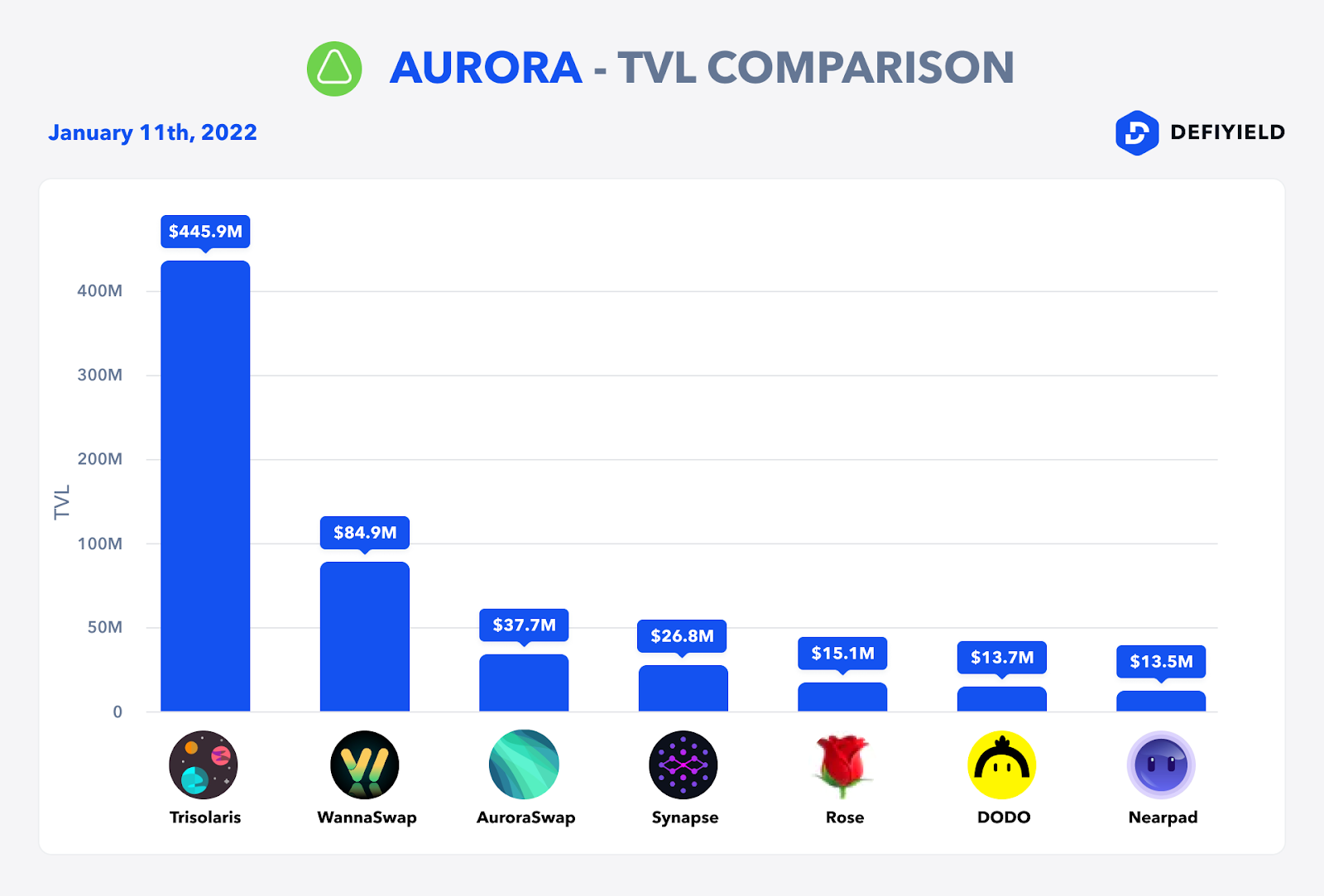
Proximity is a research and development firm focused on the NEAR Protocol and the possibilities for DeFi on NEAR in particular.
Satori is NEAR protocol’s main NFT lab. It describes itself as a ‘one-stop shop for top-tier artists and musicians looking to harness the power of crypto”.
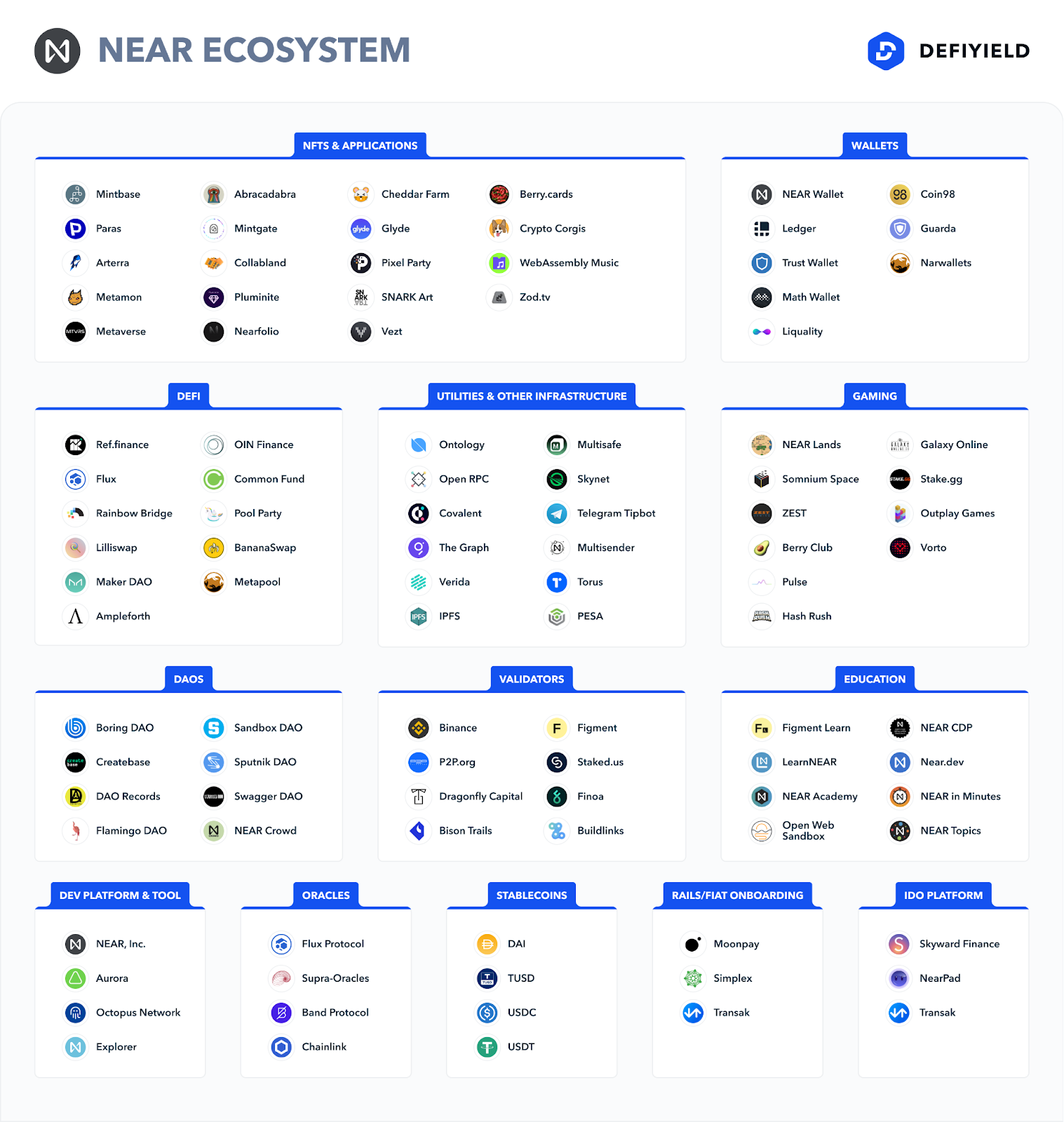
NEAR Wallet is an in-browser, web-based wallet for creating and interacting with NEAR accounts. This wallet stores account keys in the browser’s localStorage.
NEAR has several development networks operating independently of each other with their own account IDs. Because of this, there are several deployed wallets you can use.
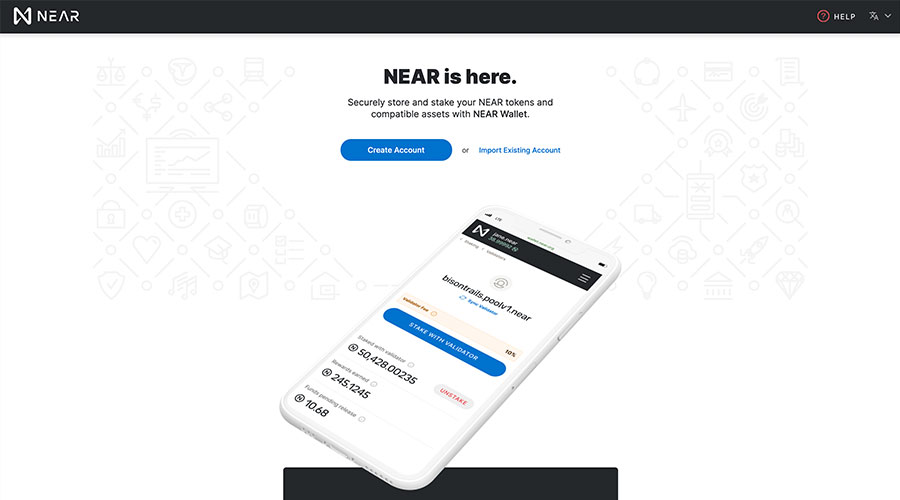
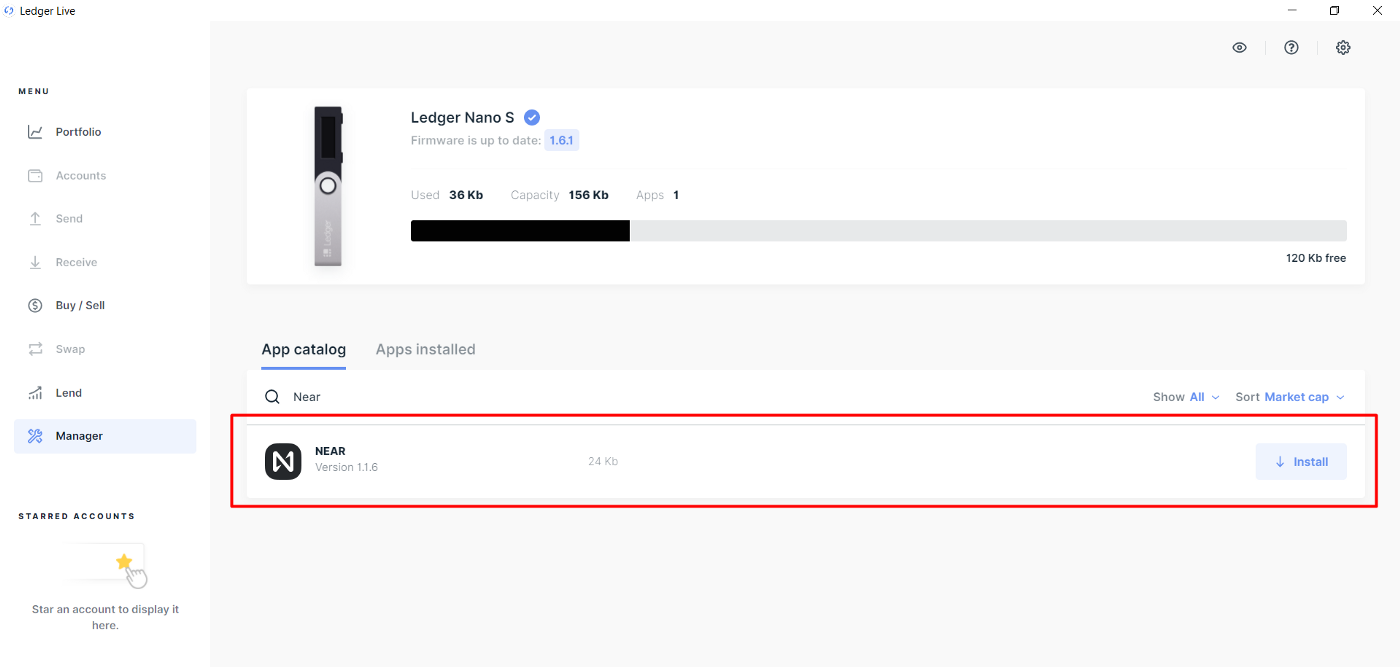
Your device will display Processing…
The app will be installed.
As mentioned, Aurora is a layer-two scaling solution built on NEAR that is EVM-compatible and includes a bridge to Ethereum. You can set up MetaMask, the popular web and mobile wallet, to use with Aurora by adding it as a network in the wallet settings.
Aurora Mainnet RPC: https://mainnet.aurora.dev/
Network ID: 1313161554
Currency symbol: ETH
The NEAR DeFi ecosystem has a lot of space to grow, however it already has a great DEX — https://www.ref.finance/ . Today, we will go through the yield farming process on it.
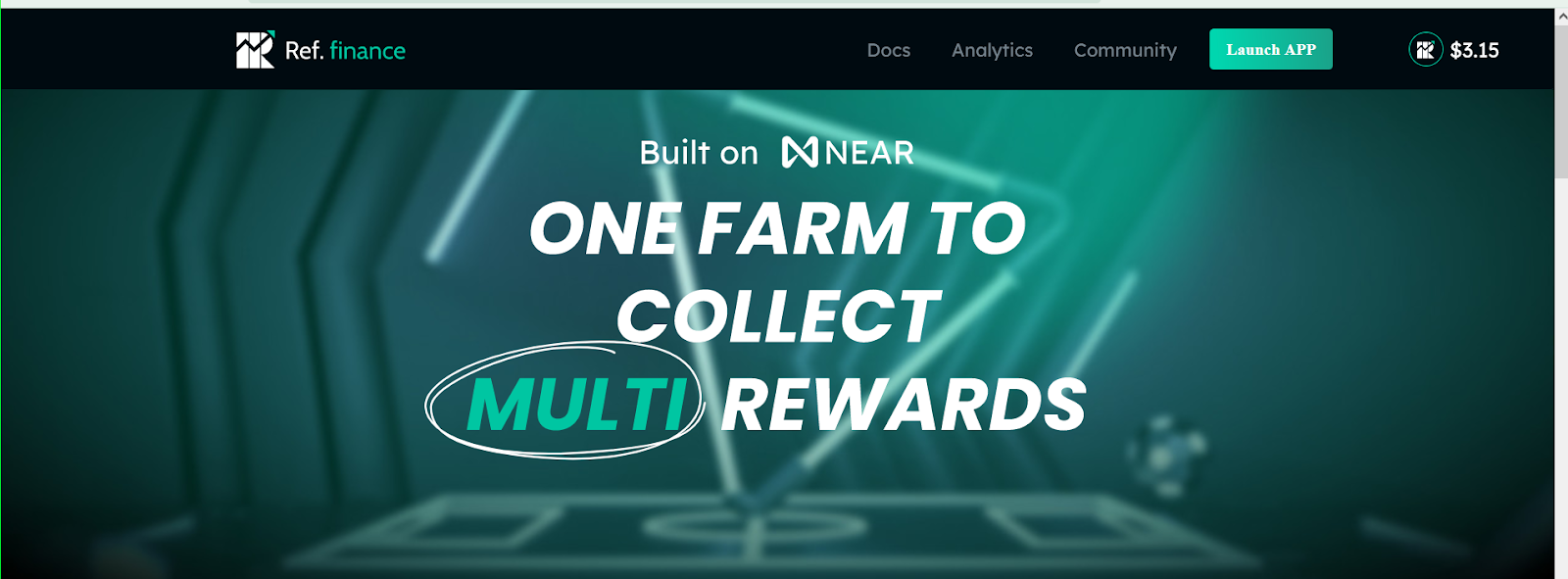
Besides the high volatility pools there’s a stablecoin pool on ref.finance that is similar to Curve logic. You can farm the native $REF token and earn fees.
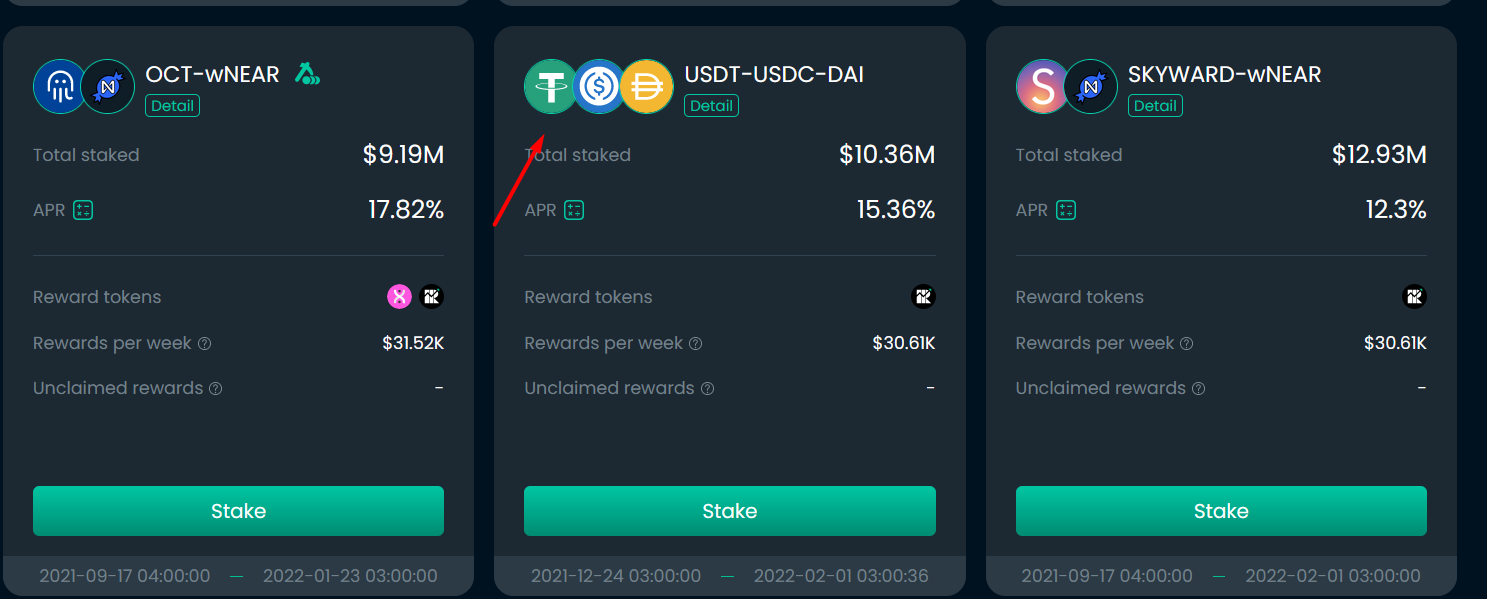
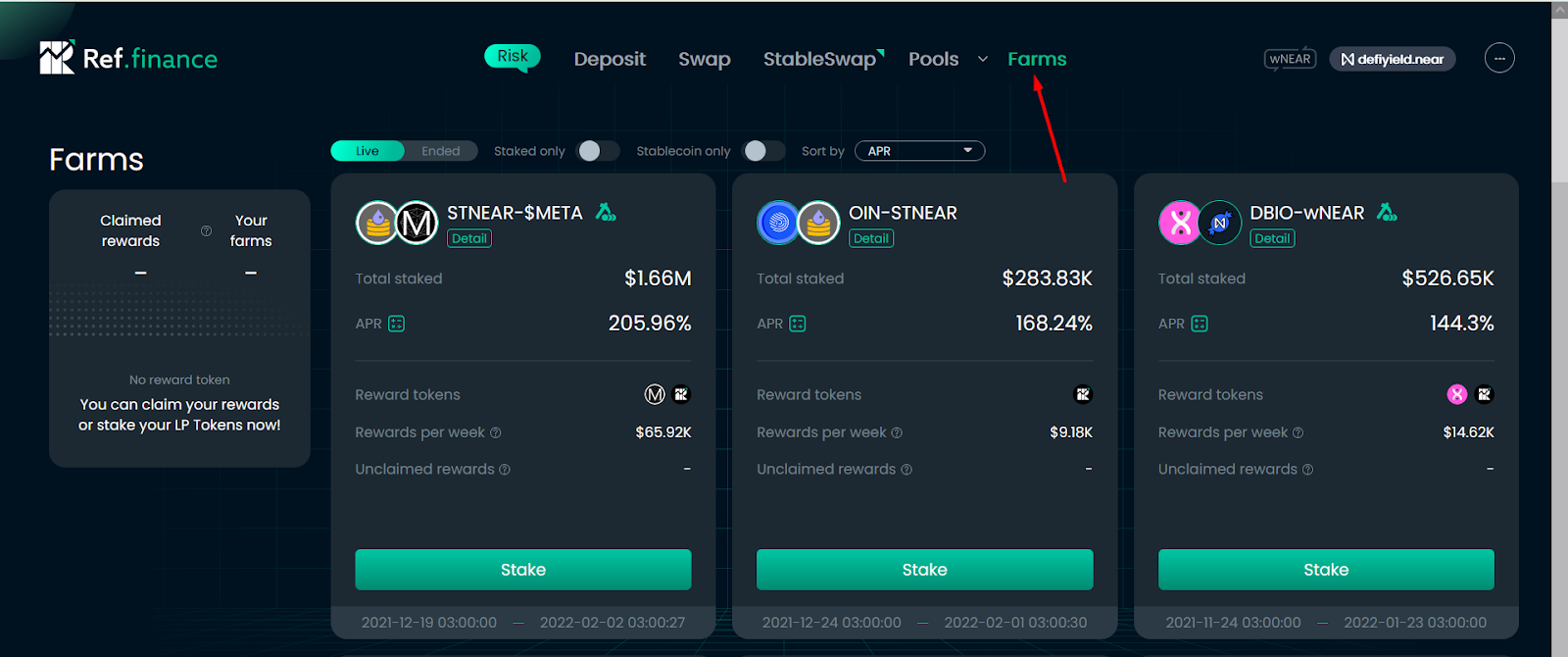
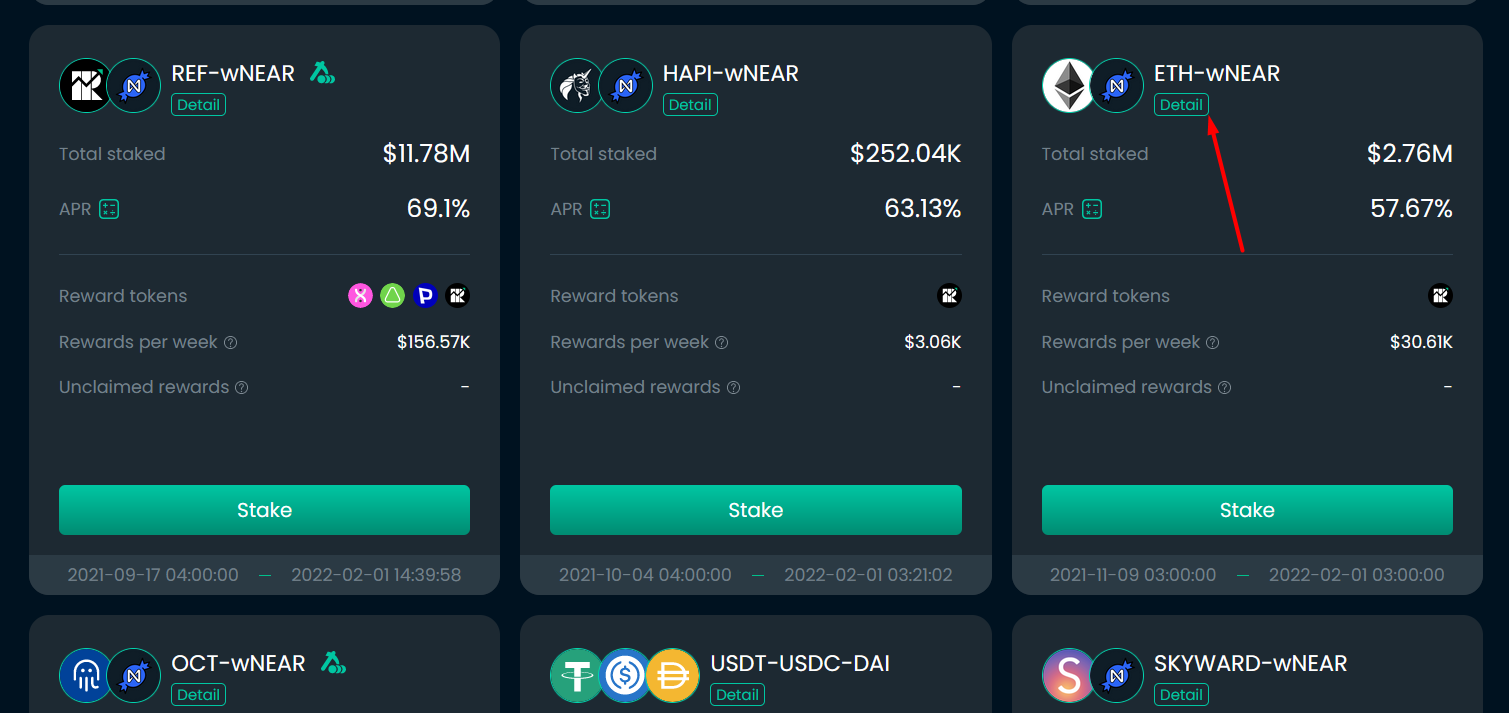
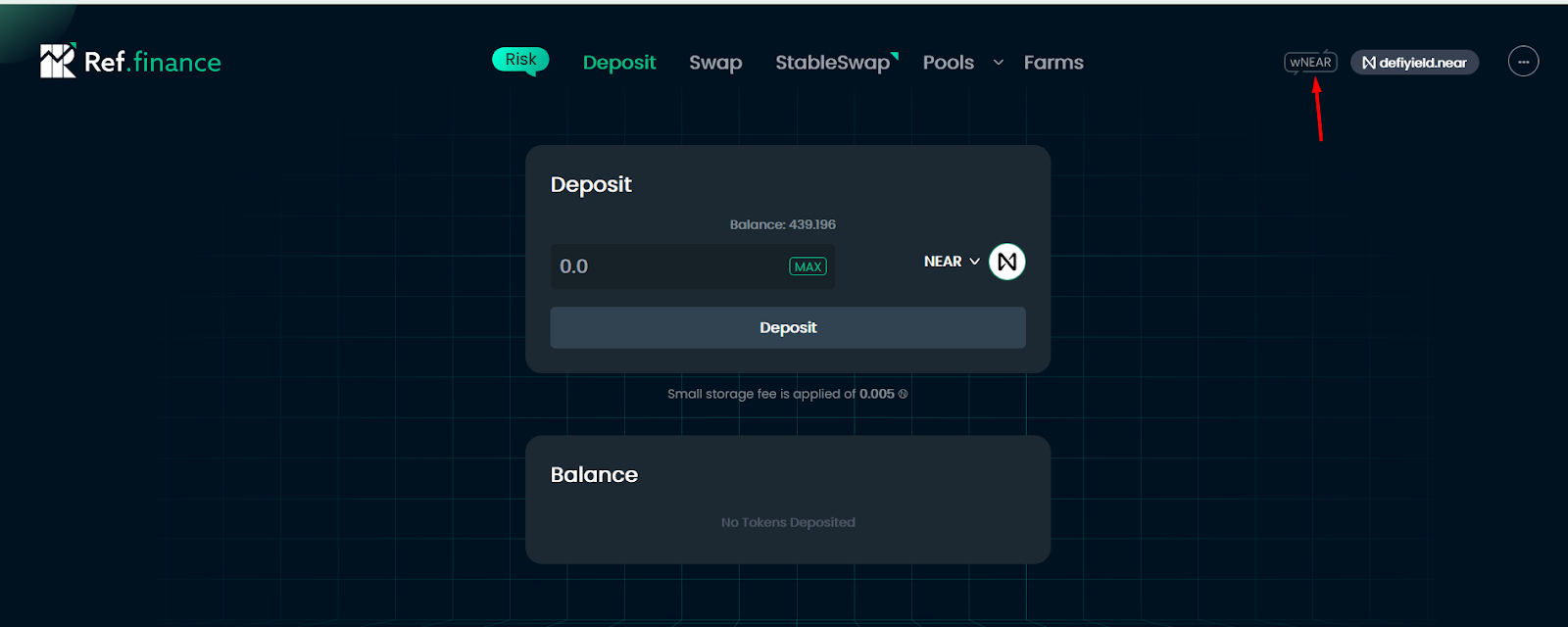
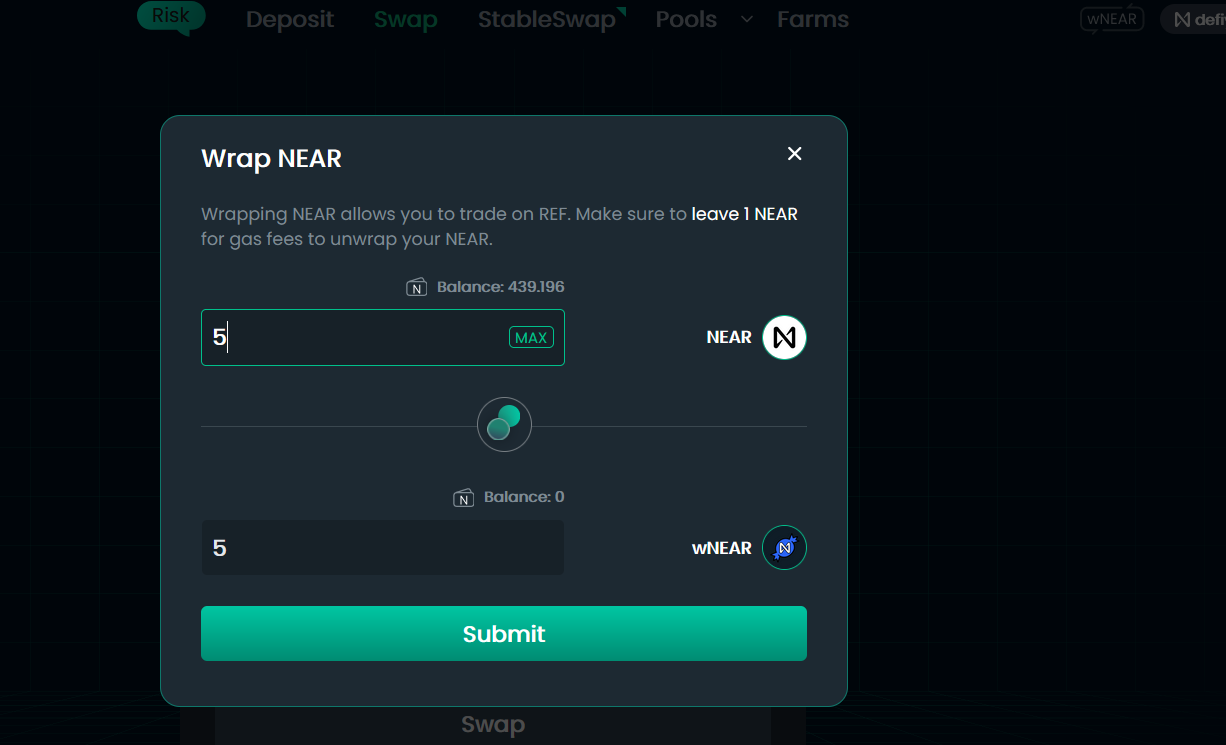


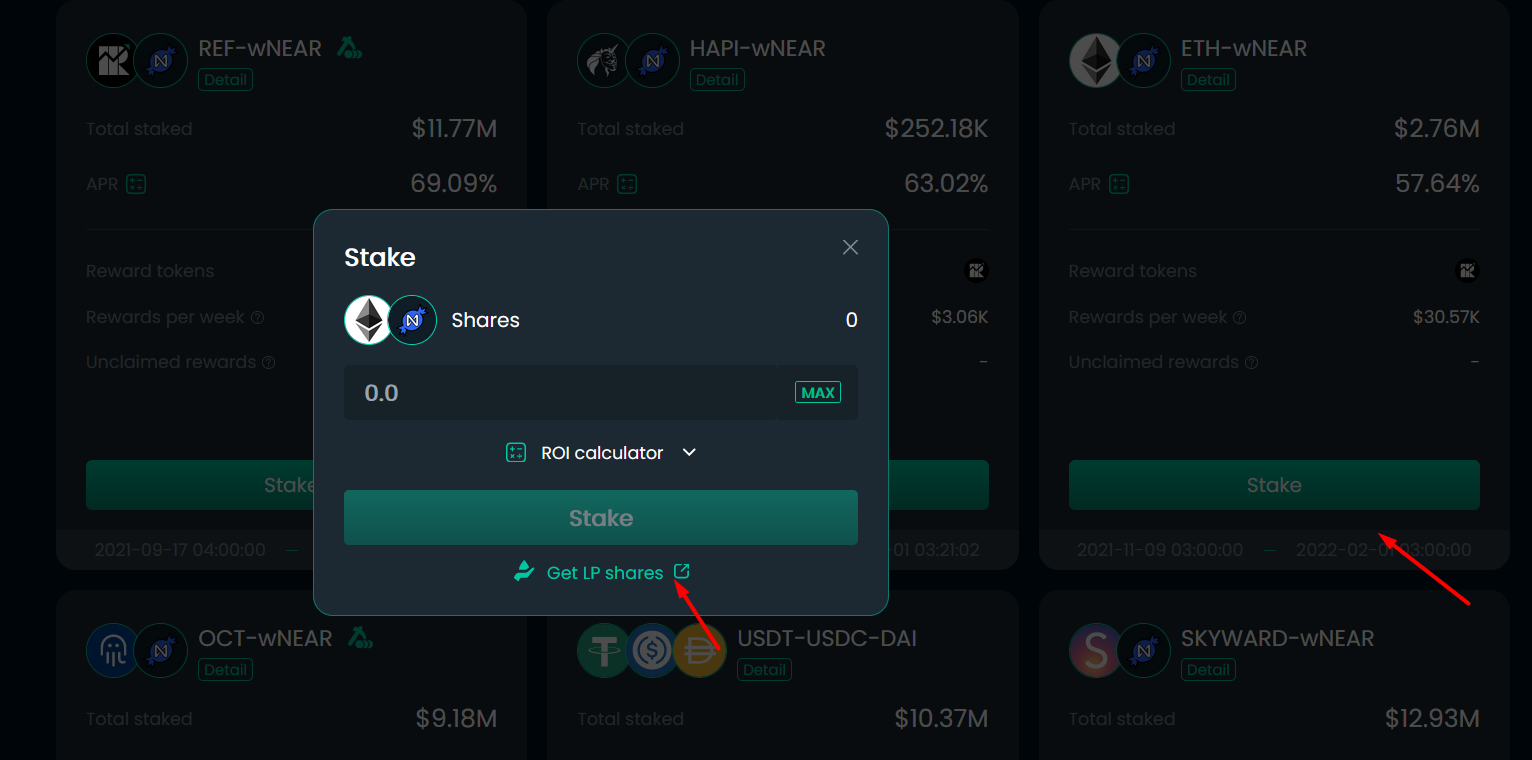

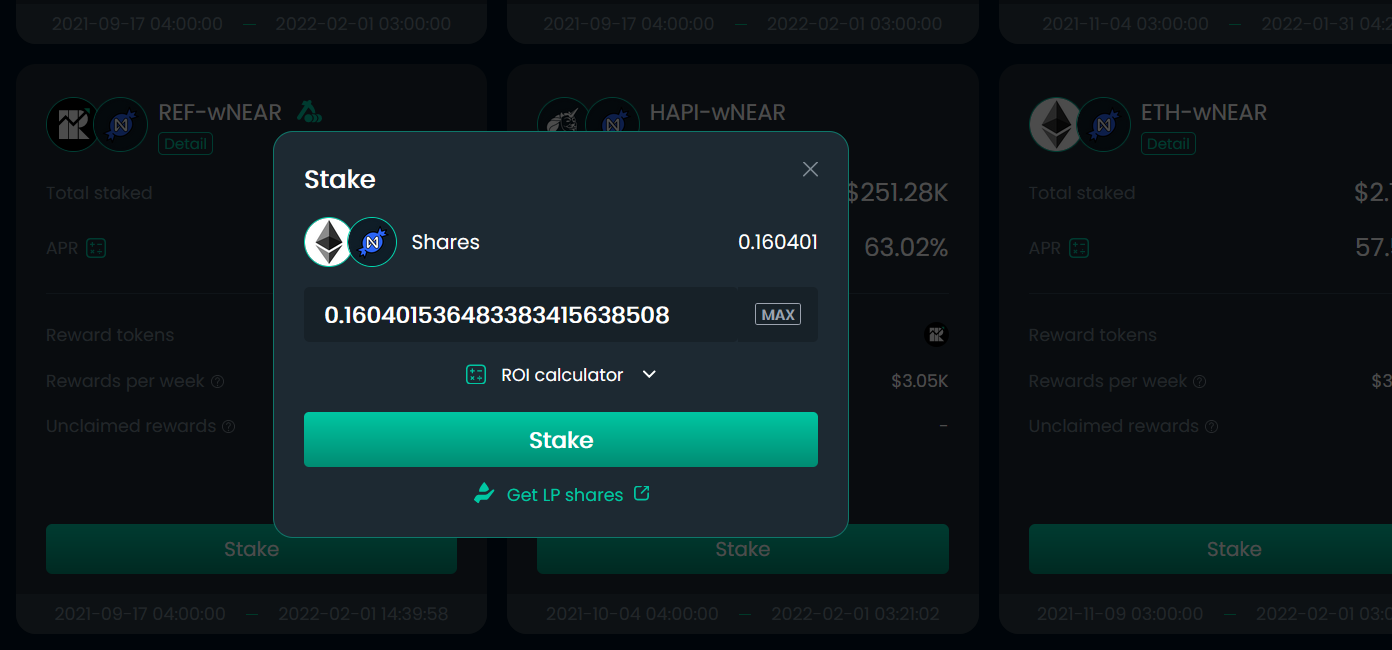
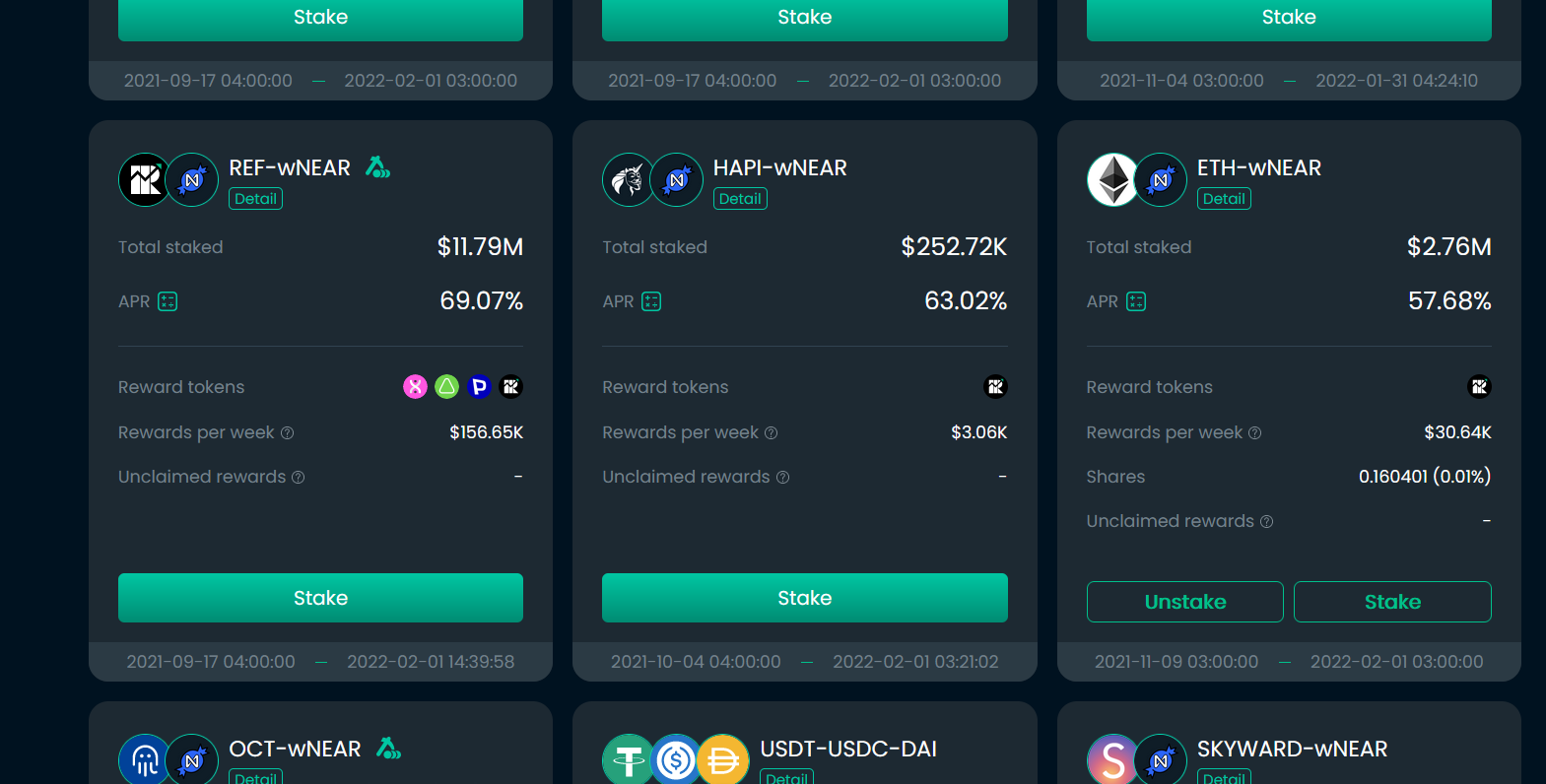
You can stake directly in the NEAR wallet.
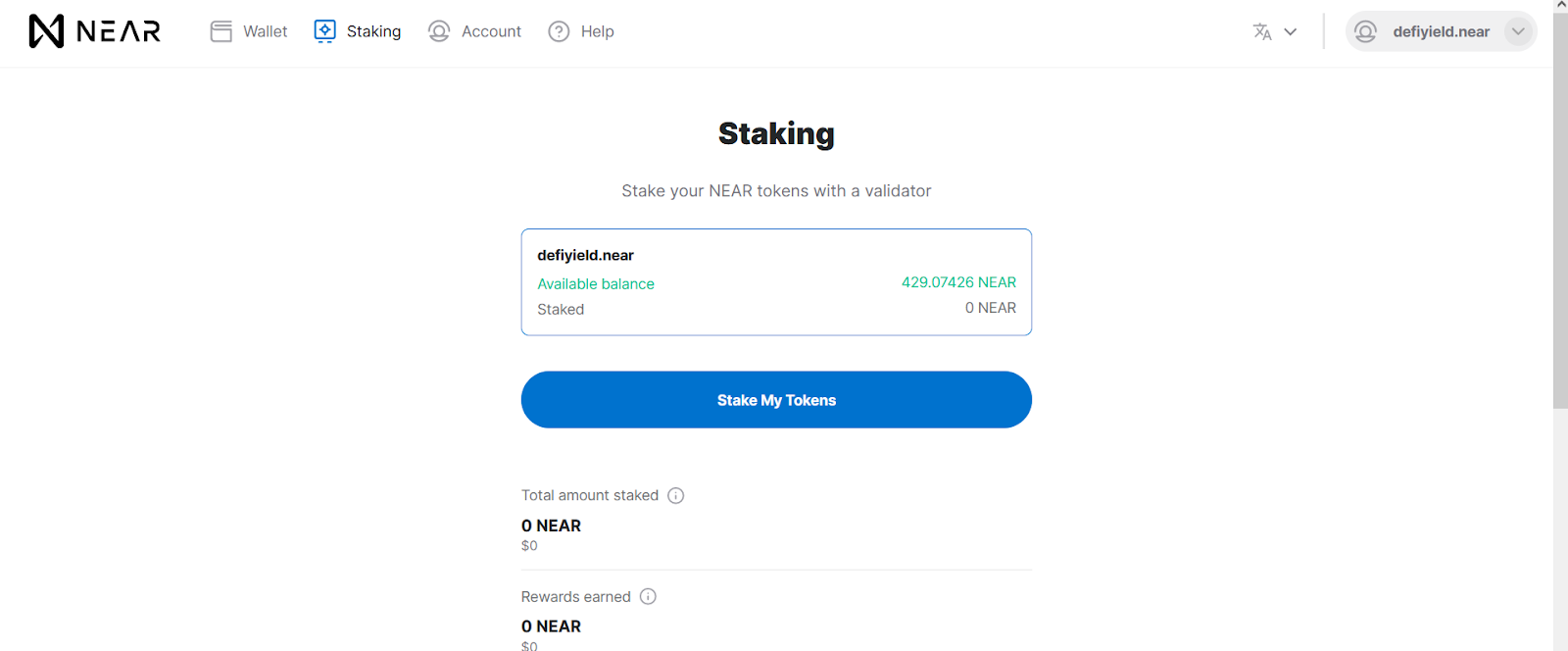
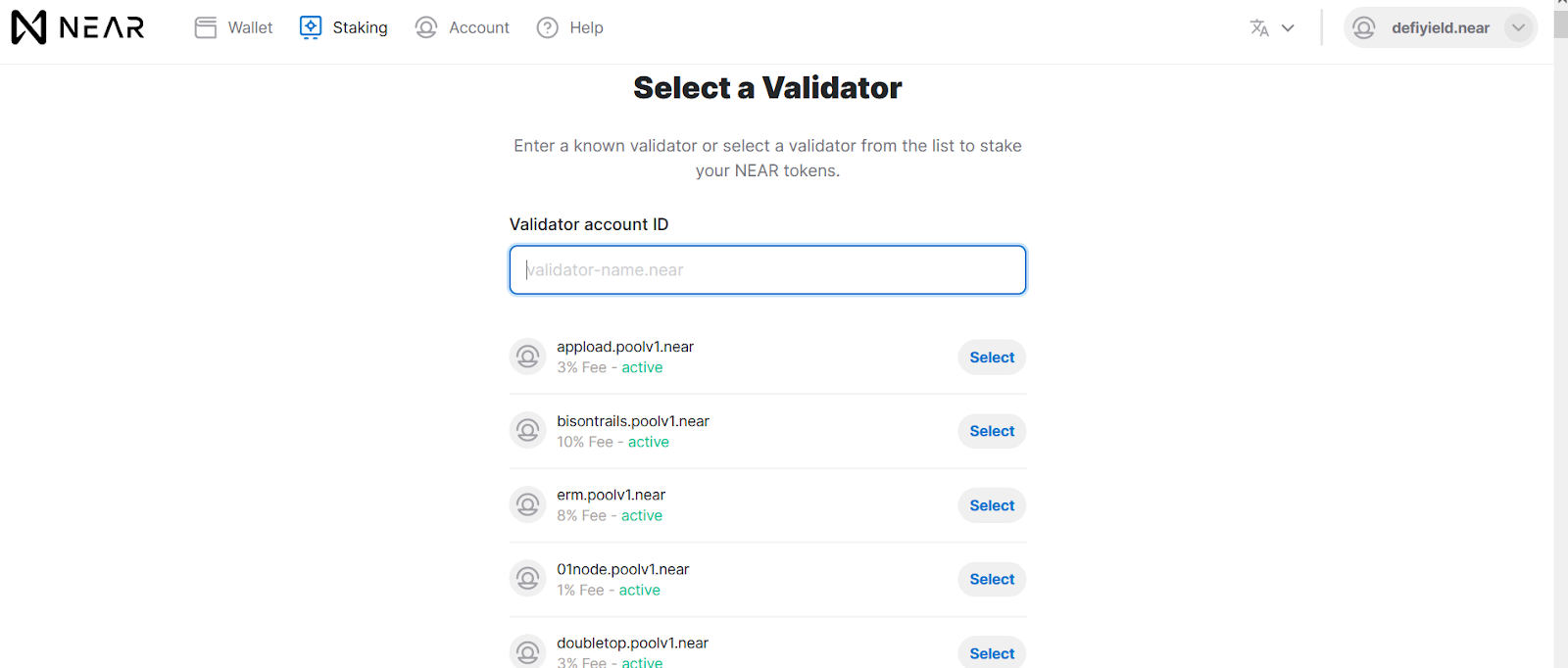

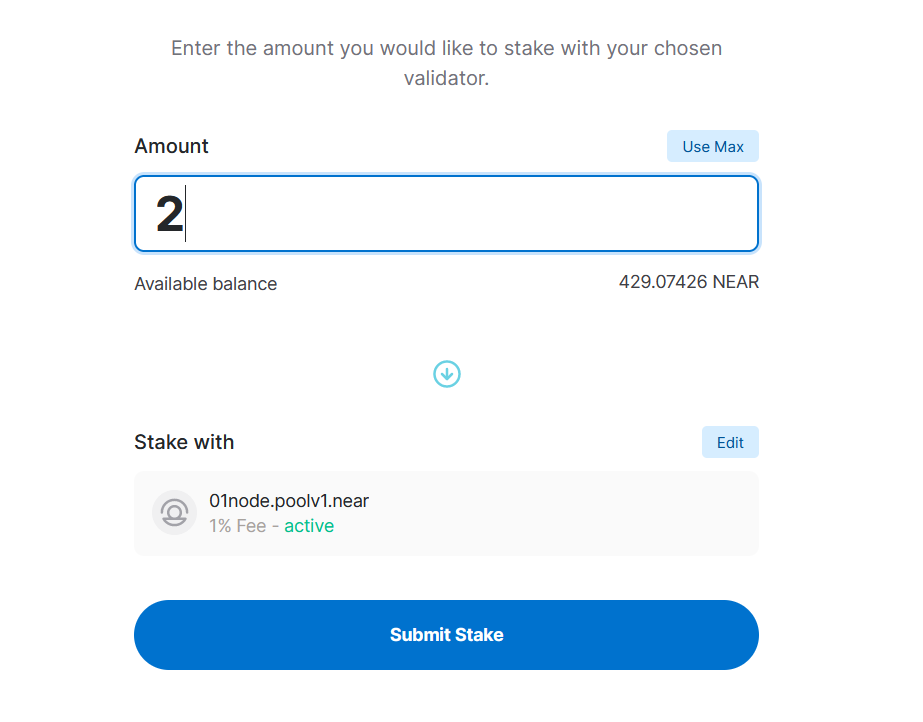
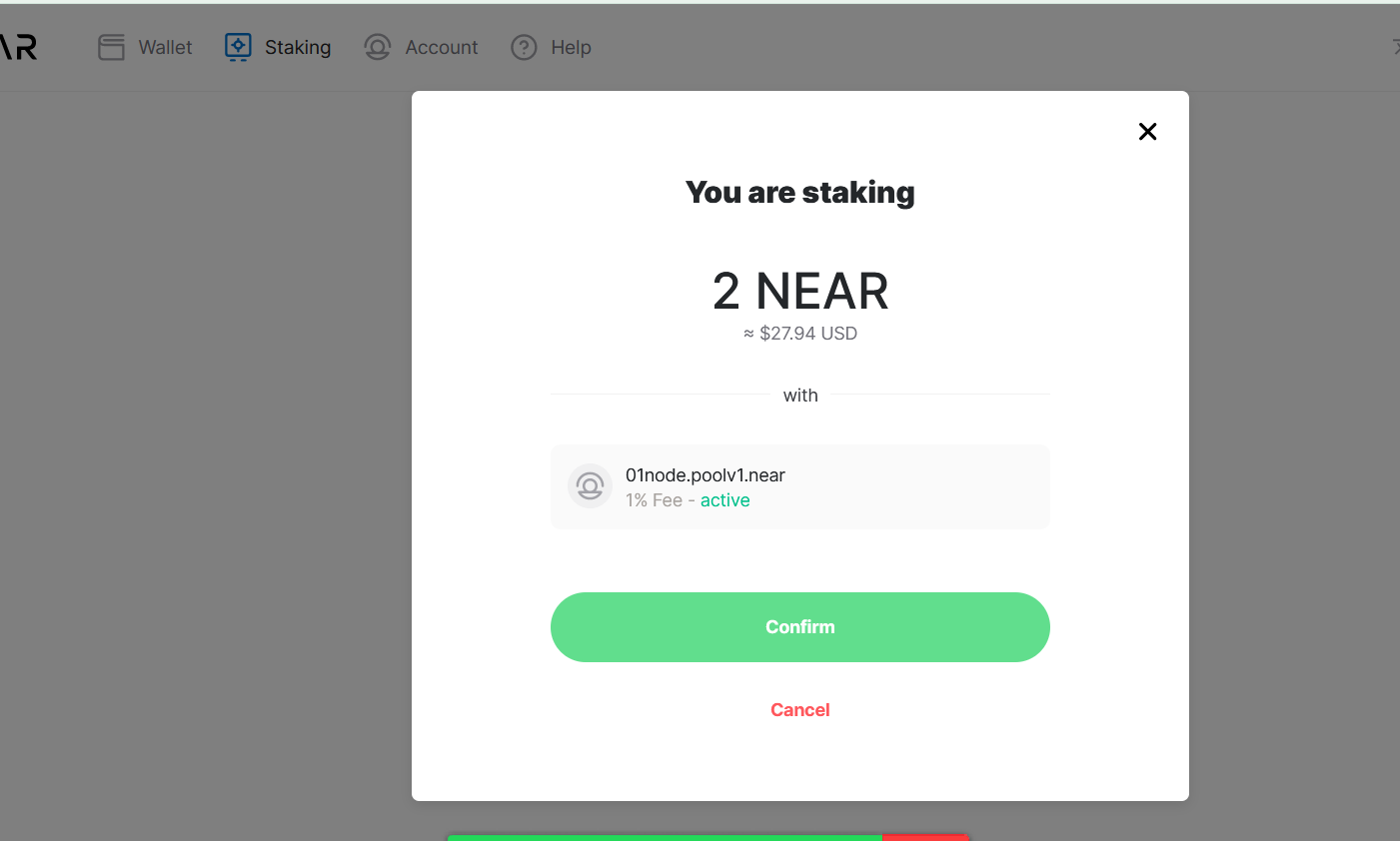
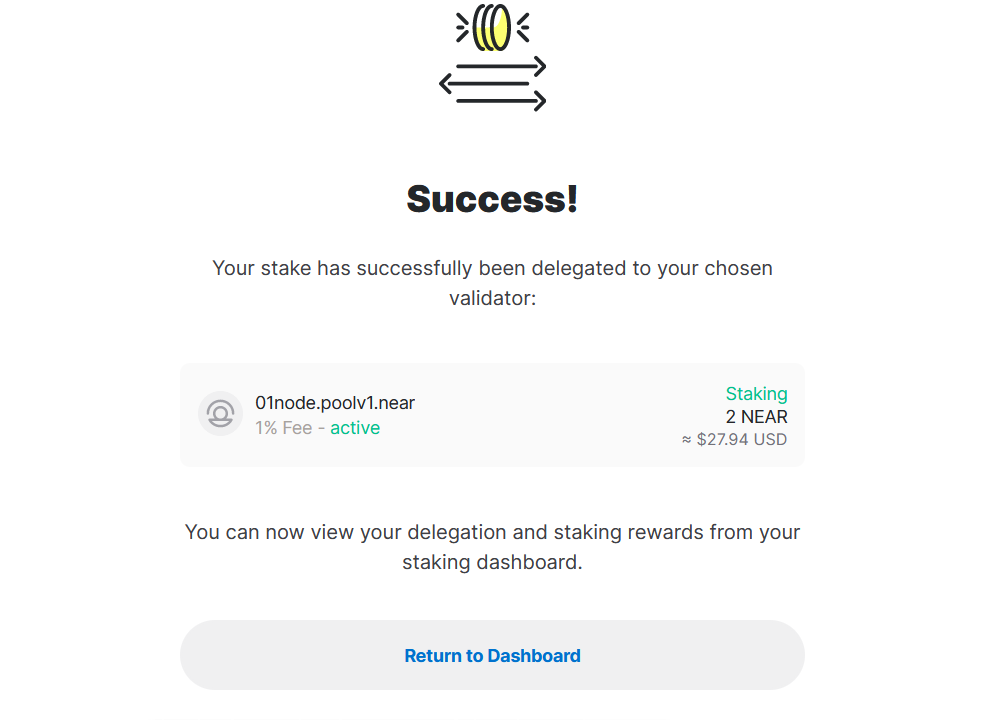
As mentioned, Aurora is a scaling solution on NEAR. It allows a user to use a fast and developed ecosystem that has good Yield Farming and investing opportunities.
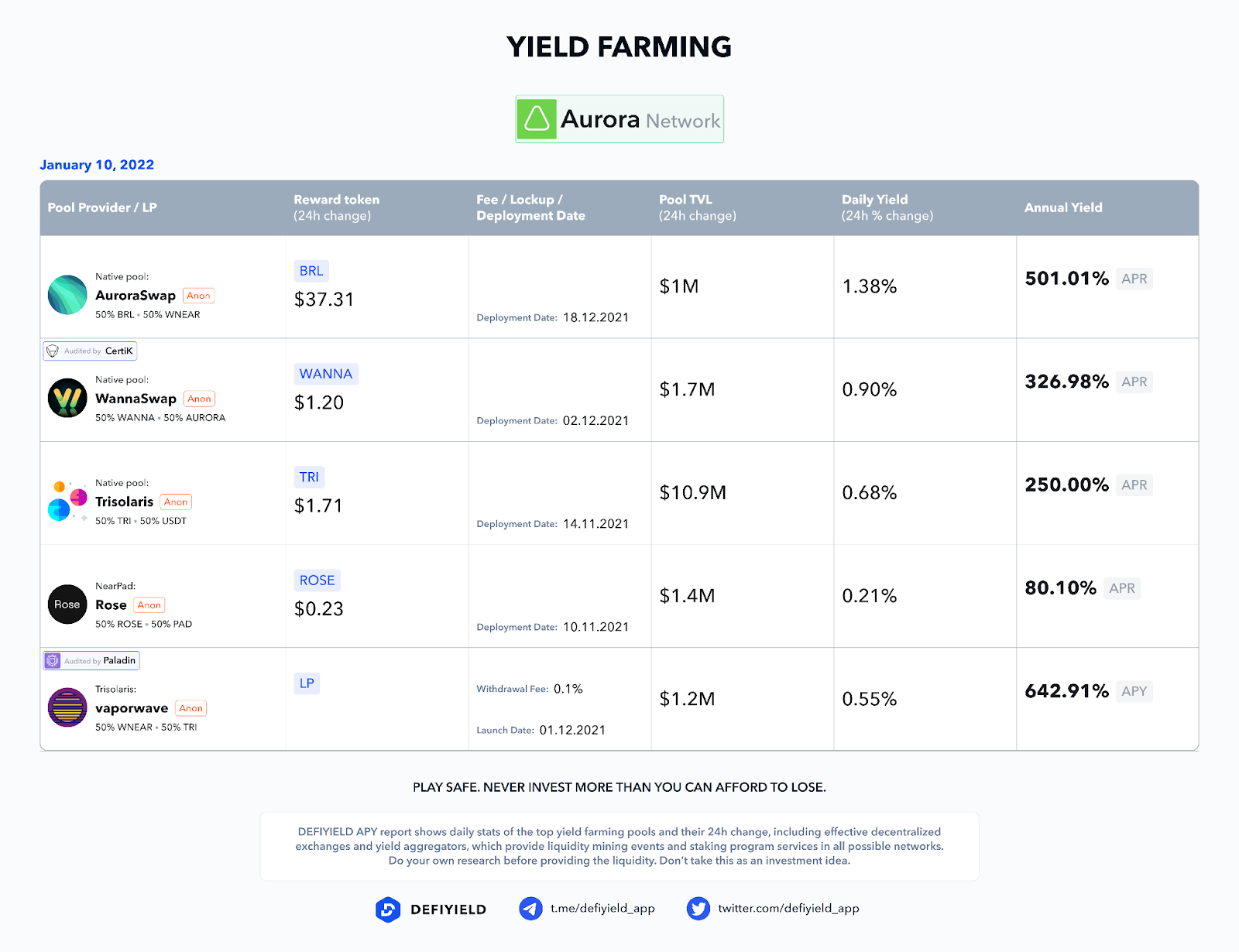
There’re a lot of dApps built on Aurora, for instance Trisolaris, Rose, AuroraSwap.
Today, we will go with Trisolaris YIeld Farming which is the biggest DEX by TVL on Aurora. Aurora is using ETH for gas fees so for Yield Farming you will need to bridge a small amount of ETH to Aurora using Rainbow Bridge.
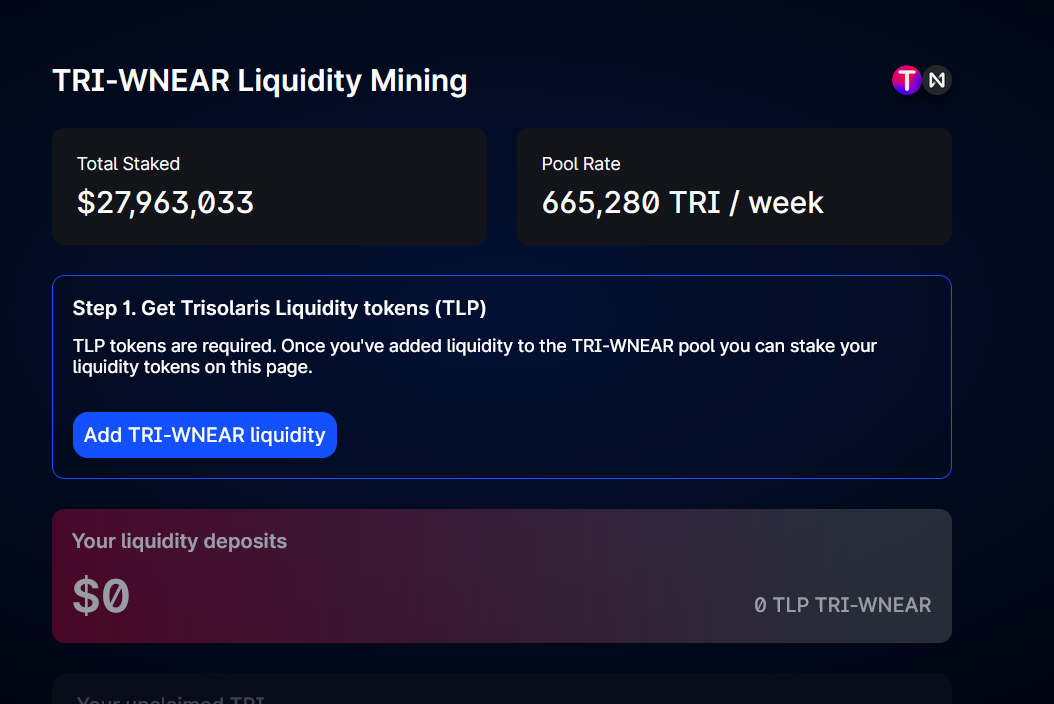
For this, you will need to swap the tokens. You will not need to wrap NEAR as it is EVM chain.

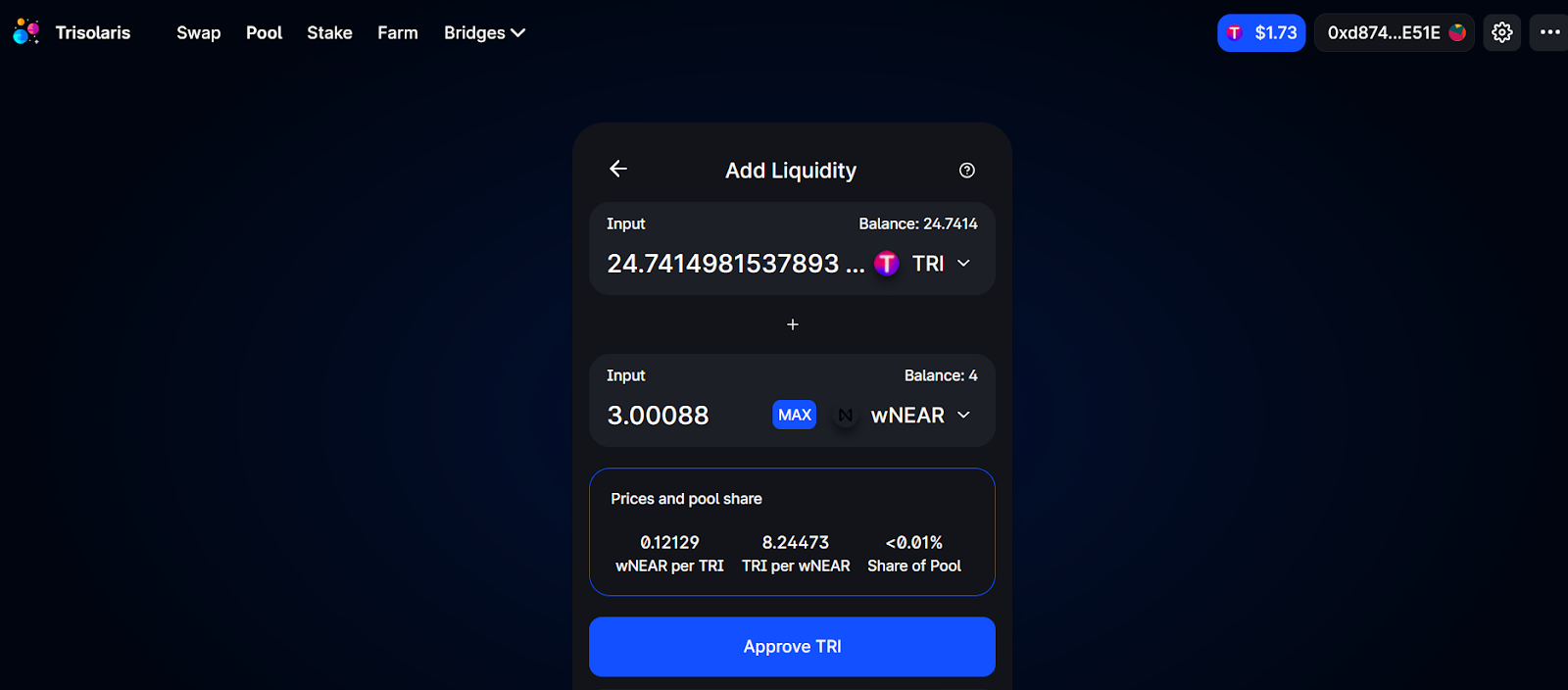



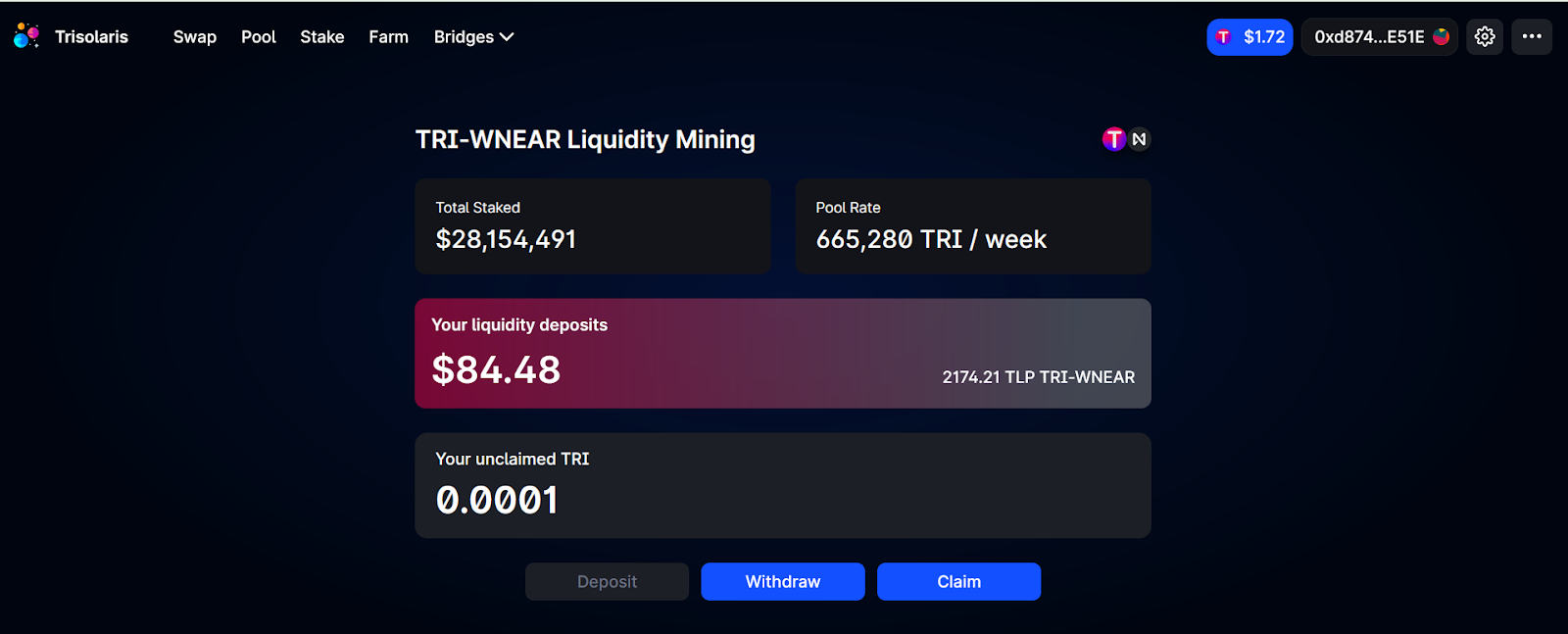
NEAR Protocol is one of many layer-one blockchains that are getting lots of attention but it does have a number of unique features that might tempt investors and yield farmers to investigate further.
As a Proof-of-Stake blockchain, there will obviously be staking opportunities but the fact that it is pioneering a sharded architecture to scale the platform and increase transaction throughput is also significant. Furthermore, there are lots of developer-centric benefits to using NEAR which, if executed correctly, should also lead to more users.
For all these reasons, plus the fact that there is a growing ecosystem of layer-two solutions, development labs and bridges to other blockchain networks, stakers and yield farmers will be encouraged to find out more. As always though, this is not investment advice and you should always do your own research first.
Here you can check yield farming opportunities on other chains: https://de.fi/explore
Tezos Ultimate Yield Farming Guide [Infographics]
Solana Network Ultimate Yield Farming Guide [Infographics]
Fantom Network Ultimate Yield Farming Guide [Infographics]
Huobi ECO Chain Ultimate Guide for Yield Farming
Polygon Network Ultimate Guide for Yield Farming
Binance Chain Ultimate Guide for Yield Farming
EOS Ultimate Yield Farming Guide
Arbitrum Ultimate Guide [Infographics]
The Ultimate Yield Farming Guide For Terra Blockchain (Luna) [Infographics]
The Ultimate Guide to Avalanche Network
Ultimate Guide to Yield Farming on Harmony (with infographics)
Ultimate Guide to Tron Network [Infographics]
The Ultimate Yield Farming Guide For Moonriver Network
The Ultimate Yield Farming Guide For Celo
The Ultimate Yield Farming Guide For KuCoin Community Chain
The Ultimate Yield Farming Guide For NEAR Protocol
And join us on twitter and telegram!
Good luck in farming!
October was a month of strong growth and ...
September was a month of global...
August was a month of major...
From major Explore Yields upgrades to...
June was a month of big releases and improvements across...
The end of May brought important updates across...
© De.Fi. All rights reserved.